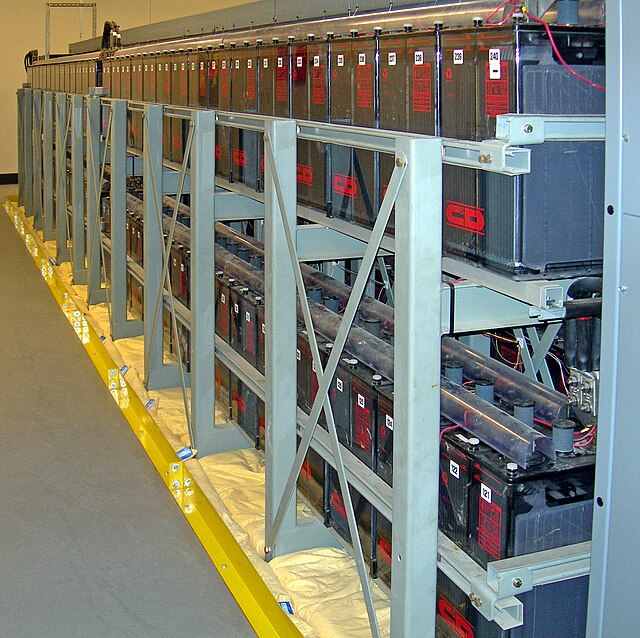A silver zinc battery is a secondary cell that utilizes silver(I,III) oxide and zinc.
Sealed 40AH silver-zinc cell and cell plates pack
A rechargeable battery, storage battery, or secondary cell, is a type of electrical battery which can be charged, discharged into a load, and recharged many times, as opposed to a disposable or primary battery, which is supplied fully charged and discarded after use. It is composed of one or more electrochemical cells. The term "accumulator" is used as it accumulates and stores energy through a reversible electrochemical reaction. Rechargeable batteries are produced in many different shapes and sizes, ranging from button cells to megawatt systems connected to stabilize an electrical distribution network. Several different combinations of electrode materials and electrolytes are used, including lead–acid, zinc–air, nickel–cadmium (NiCd), nickel–metal hydride (NiMH), lithium-ion (Li-ion), lithium iron phosphate (LiFePO4), and lithium-ion polymer.
A battery bank used for an uninterruptible power supply in a data center
A rechargeable lithium polymer mobile phone battery
A common consumer battery charger for rechargeable AA and AAA batteries
Cylindrical cell (18650) prior to assembly. Several thousand of them (lithium ion) form the Tesla Model S battery (see Gigafactory).





